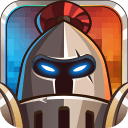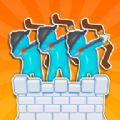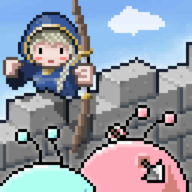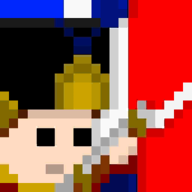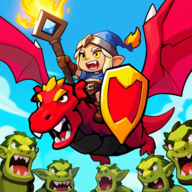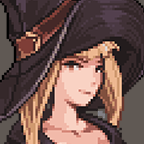Android中相对布局RelativeLayout属性大全
在Android开发中,RelativeLayout 是一种非常常用的布局方式。它允许开发者通过定义控件之间的相对位置来灵活地组织界面元素。相比其他布局方式(如 LinearLayout 或 ConstraintLayout),RelativeLayout 提供了更直观的控件定位方式,使得开发者可以轻松实现复杂的用户界面设计。本文将详细介绍 RelativeLayout 的常用属性及其作用,帮助开发者更好地掌握这一布局工具。
一、RelativeLayout的基本概念
定义
RelativeLayout 是一种基于相对位置的布局容器,其中每个子控件的位置都可以根据其他控件或父容器的边界进行定义。这种布局方式非常适合需要动态调整控件位置的场景。
特点
灵活性:支持多种相对定位方式,便于实现复杂布局。
高效性:相比嵌套布局,RelativeLayout 可以减少层级深度,提高渲染性能。
适应性:能够很好地适配不同屏幕尺寸和分辨率。
二、RelativeLayout的主要属性
基于父容器的定位属性
这些属性用于将控件相对于父容器的边界进行定位。
android:layout_alignParentTop="true"
将控件的顶部对齐到父容器的顶部。
android:layout_alignParentBottom="true"
将控件的底部对齐到父容器的底部。
android:layout_alignParentLeft="true"
将控件的左侧对齐到父容器的左侧(适用于从左到右的语言环境)。
android:layout_alignParentRight="true"
将控件的右侧对齐到父容器的右侧(适用于从左到右的语言环境)。
android:layout_alignParentStart="true"
将控件的起始边对齐到父容器的起始边(支持多语言环境,推荐使用)。
android:layout_alignParentEnd="true"
将控件的结束边对齐到父容器的结束边(支持多语言环境,推荐使用)。
android:layout_centerInParent="true"
将控件居中放置在父容器内。
android:layout_centerHorizontal="true"
将控件水平居中放置在父容器内。
android:layout_centerVertical="true"
将控件垂直居中放置在父容器内。
基于其他控件的定位属性
这些属性用于将控件相对于其他控件进行定位。
android:layout_toRightOf="@id/other_view"
将控件放置在指定控件的右侧(适用于从左到右的语言环境)。
android:layout_toLeftOf="@id/other_view"
将控件放置在指定控件的左侧(适用于从左到右的语言环境)。
android:layout_toEndOf="@id/other_view"
将控件放置在指定控件的结束边之后(支持多语言环境,推荐使用)。
android:layout_toStartOf="@id/other_view"
将控件放置在指定控件的起始边之前(支持多语言环境,推荐使用)。
android:layout_above="@id/other_view"
将控件放置在指定控件的上方。
android:layout_below="@id/other_view"
将控件放置在指定控件的下方。
android:layout_alignTop="@id/other_view"
将控件的顶部与指定控件的顶部对齐。
android:layout_alignBottom="@id/other_view"
将控件的底部与指定控件的底部对齐。
android:layout_alignLeft="@id/other_view"
将控件的左侧与指定控件的左侧对齐(适用于从左到右的语言环境)。
android:layout_alignRight="@id/other_view"
将控件的右侧与指定控件的右侧对齐(适用于从左到右的语言环境)。
android:layout_alignStart="@id/other_view"
将控件的起始边与指定控件的起始边对齐(支持多语言环境,推荐使用)。
android:layout_alignEnd="@id/other_view"
将控件的结束边与指定控件的结束边对齐(支持多语言环境,推荐使用)。
其他常用属性
除了上述定位属性外,RelativeLayout 还支持以下属性:
android:layout_margin
设置控件与其他控件或父容器之间的间距。例如:
android:layout_marginTop="16dp":设置控件顶部的间距。
android:layout_marginLeft="16dp":设置控件左侧的间距。
android:layout_marginStart="16dp":设置控件起始边的间距(支持多语言环境,推荐使用)。
android:layout_width 和 android:layout_height
定义控件的宽度和高度。常用值包括:
match_parent:控件大小与父容器相同。
wrap_content:控件大小根据内容自动调整。
android:id
为控件分配一个唯一标识符,以便在其他控件的定位属性中引用。
三、RelativeLayout的实际应用示例
示例1:简单的登录界面
以下是一个典型的登录界面布局,展示了如何使用 RelativeLayout 的属性进行控件定位。
<RelativeLayout
xmlns:android="http://schemas.android.com/apk/res/android"
android:layout_width="match_parent"
android:layout_height="match_parent">
<!--用户名输入框-->
<EditText
android:id="@+id/username"
android:layout_width="match_parent"
android:layout_height="wrap_content"
android:hint="请输入用户名"
android:layout_centerHorizontal="true"
android:layout_marginTop="100dp"/>
<!--密码输入框-->
<EditText
android:id="@+id/password"
android:layout_width="match_parent"
android:layout_height="wrap_content"
android:hint="请输入密码"
android:layout_below="@id/username"
android:layout_marginTop="16dp"/>
<!--登录按钮-->
<Button
android:id="@+id/login_button"
android:layout_width="wrap_content"
android:layout_height="wrap_content"
android:text="登录"
android:layout_below="@id/password"
android:layout_centerHorizontal="true"
android:layout_marginTop="16dp"/>
</RelativeLayout>示例2:复杂的标签布局
以下是一个标签布局示例,展示了如何使用多个定位属性实现复杂的控件排列。
<RelativeLayout
xmlns:android="http://schemas.android.com/apk/res/android"
android:layout_width="match_parent"
android:layout_height="match_parent">
<!--标签1-->
<TextView
android:id="@+id/tag1"
android:layout_width="wrap_content"
android:layout_height="wrap_content"
android:text="标签1"
android:layout_alignParentStart="true"
android:layout_marginStart="16dp"
android:layout_marginTop="16dp"/>
<!--标签2-->
<TextView
android:id="@+id/tag2"
android:layout_width="wrap_content"
android:layout_height="wrap_content"
android:text="标签2"
android:layout_toEndOf="@id/tag1"
android:layout_alignBaseline="@id/tag1"
android:layout_marginStart="8dp"/>
<!--标签3-->
<TextView
android:id="@+id/tag3"
android:layout_width="wrap_content"
android:layout_height="wrap_content"
android:text="标签3"
android:layout_below="@id/tag1"
android:layout_alignStart="@id/tag1"
android:layout_marginTop="8dp"/>
</RelativeLayout>四、RelativeLayout的优势与局限性
优势
灵活性:可以通过多种属性自由定义控件的相对位置。
性能优化:减少了嵌套布局的使用,提高了渲染效率。
易于维护:控件之间的关系清晰,便于后续修改和扩展。
局限性
学习曲线:对于初学者来说,可能需要花时间熟悉各种定位属性。
复杂度限制:当布局过于复杂时,RelativeLayout 可能会变得难以维护,此时建议考虑使用 ConstraintLayout。

RelativeLayout 是Android开发中一种强大且灵活的布局方式,其丰富的属性为开发者提供了极大的自由度来组织界面元素。通过本文的详细讲解,我们了解了 RelativeLayout 的基本概念、主要属性以及实际应用示例。
以上就是php小编整理的全部内容,希望对您有所帮助,更多相关资料请查看php教程栏目。
-
 核芯显卡是什么意思?核芯显卡和独立显卡有什么区别? 时间:2025-12-19
核芯显卡是什么意思?核芯显卡和独立显卡有什么区别? 时间:2025-12-19 -
 什么是算术逻辑单元ALU 算术逻辑单元的功能和结构 时间:2025-12-19
什么是算术逻辑单元ALU 算术逻辑单元的功能和结构 时间:2025-12-19 -
 什么是视觉识别色差检测 视觉识别色差检测的原理、技术特点、应用及常用工具 时间:2025-12-19
什么是视觉识别色差检测 视觉识别色差检测的原理、技术特点、应用及常用工具 时间:2025-12-19 -
 什么是流量控制 流量控制和拥塞控制的区别 时间:2025-12-19
什么是流量控制 流量控制和拥塞控制的区别 时间:2025-12-19 -
 GPU虚拟化是什么意思 GPU虚拟化有哪三种方法 时间:2025-12-19
GPU虚拟化是什么意思 GPU虚拟化有哪三种方法 时间:2025-12-19 -
 独显是什么意思 独显和集显的区别 时间:2025-12-19
独显是什么意思 独显和集显的区别 时间:2025-12-19
今日更新
-
 pixiv官网网址免登录直达2026-pixiv官方网站如何快速登陆
pixiv官网网址免登录直达2026-pixiv官方网站如何快速登陆
阅读:18
-
 豆包AI智能在线入口官网-豆包AI网页版直达链接
豆包AI智能在线入口官网-豆包AI网页版直达链接
阅读:18
-
 女特种兵梗是什么梗揭秘全网爆火的女兵搞笑名场面
女特种兵梗是什么梗揭秘全网爆火的女兵搞笑名场面
阅读:18
-
 币安理财产品赎回延迟补偿标准详解及制定依据
币安理财产品赎回延迟补偿标准详解及制定依据
阅读:18
-
 TikTok视频在线观看入口-TikTok官网高清视频流畅播放
TikTok视频在线观看入口-TikTok官网高清视频流畅播放
阅读:18
-
 夸克网页版入口-夸克官网网址链接一键直达
夸克网页版入口-夸克官网网址链接一键直达
阅读:18
-
 币安优化UI设计会借鉴其他交易平台的成功经验吗
币安优化UI设计会借鉴其他交易平台的成功经验吗
阅读:18
-
 哔哩哔哩网页版快速入口-哔哩哔哩bilibili官网一键直达
哔哩哔哩网页版快速入口-哔哩哔哩bilibili官网一键直达
阅读:18
-
 想知道女团身上最火的梗是什么梗?揭秘全网热议名场面真相!
想知道女团身上最火的梗是什么梗?揭秘全网热议名场面真相!
阅读:18
-
 币安标记价格机制如何按交易品种差异化调整
币安标记价格机制如何按交易品种差异化调整
阅读:18













